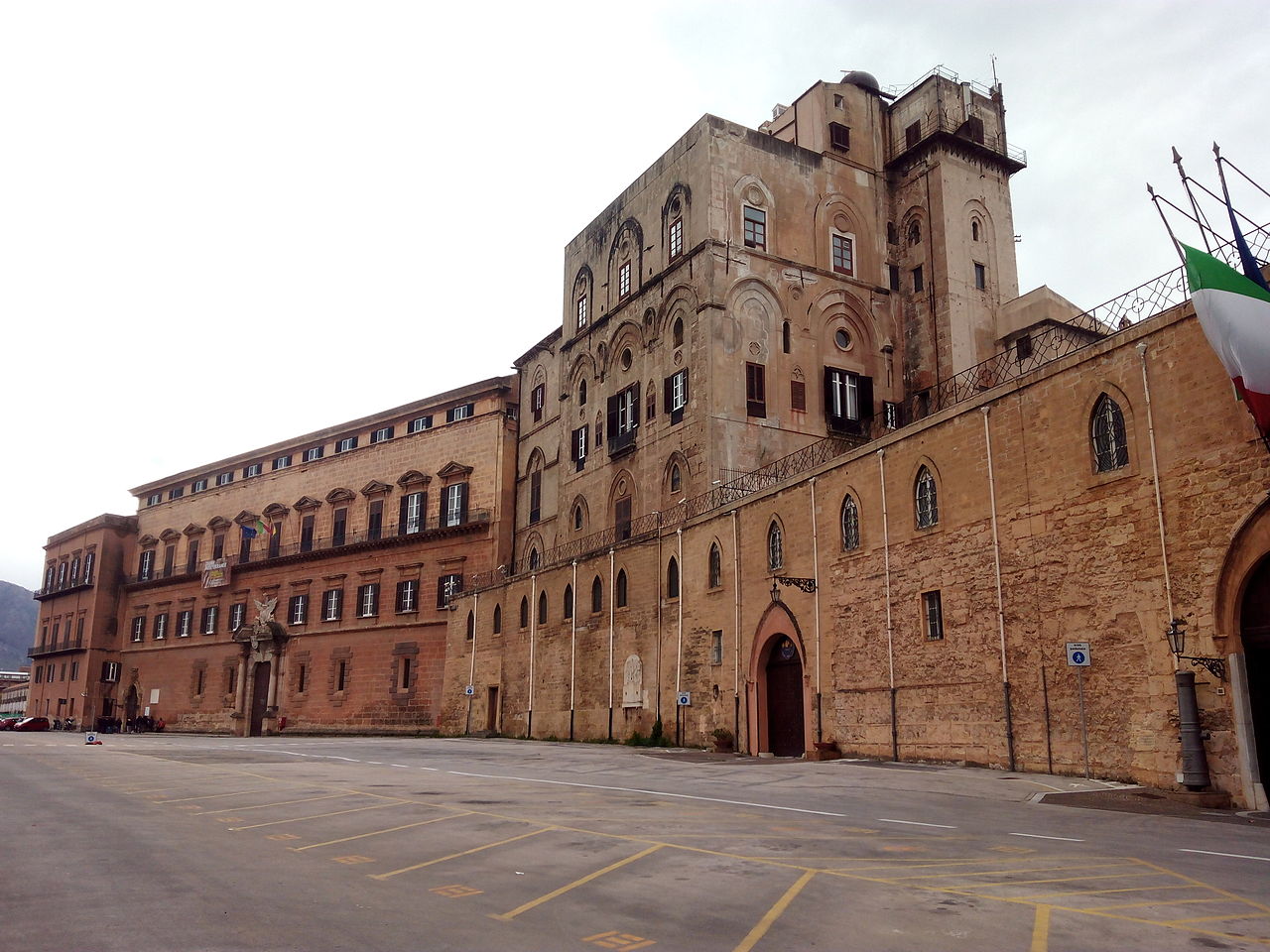The Royal Palace or The Norman Palace of Palermo was constructed on the highest part of the city, above a Punic installation discovered in 1984 (located in the section under the Duke of Montalto Halls). During the Arab domination, the first nucleus was built between the rivers Kemonia and Papireto with characteristics that were typically defensive, that is why it was named “Qsar”, a term that in Arabic indicates more than a castle, but also a fortress for military assignments.
With the arrival of the Normans to Palermo in 1072, the reconstruction and amplification of the city began, work that allowed the transformation from fortress to Royal Palace and neuralgic center of complex events that, in 1130, following the crowning of Roger II of Altavilla (first Norman king of Sicily) conducted to the construction of the marvelous Palatine Chapel.
Four towers characterized the main nucleus of the Norman palace, inside of which could’ve be a workshop and a textile laboratory (tiraz); to which the courts, first of Roger II and later of William I (the Mean one) and of William II (the Good one), succeeded on the miracle of joining cultures deeply diverse.
Frederick II of Swabia , heir of Henry VI Hohenstaufen and Constance of Altavilla, continued his grandfather Roger II’s line of politics, and despite the fact that he was involved in the Palermitan direction only at an early age, he organized the administrative activities, as well as the cultural aspects with the meetings of the Sicilian Poetry School.
After a phase of forgetfulness, characterized during the Angevin and Aragonese domination, the Royal Palace was relaunched from the politics of the Spanish viceroys in the second phase of the XVI century, and therefore were constituted new architectonic elements with military stamp and of representation, consistent with the new organizational needs (among which the Fountain Courtyard 1584 and the Maqueda Courtyard 1600).
The Bourbons period gave a cue for the completion of the “Palace” and in particular to the new decorations in the Hercules Hall, today home of the Sicilian Regional Assembly.
